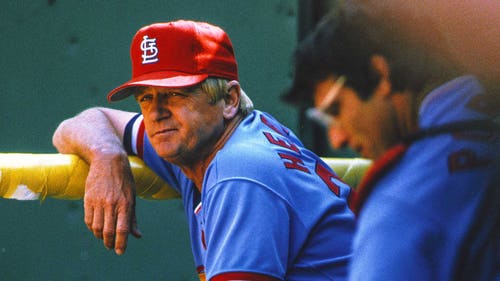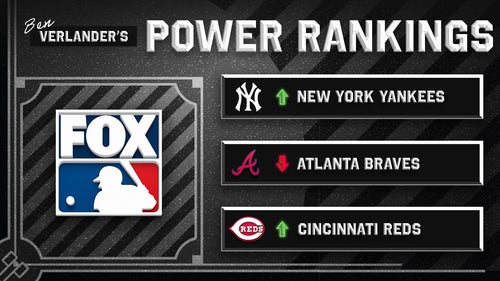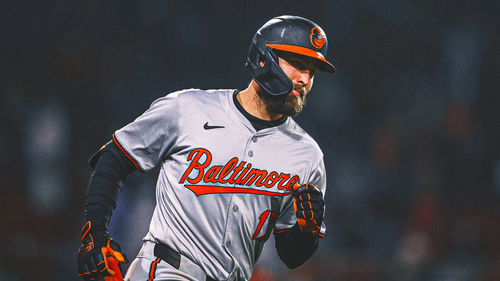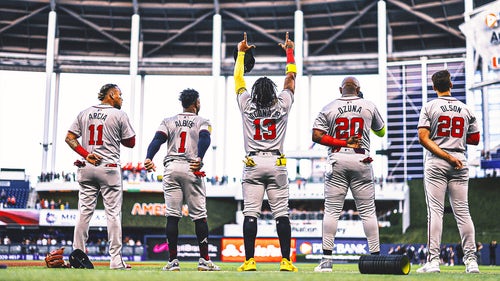
My toughest Hall of Fame ballot omissions
Ten years of membership in the Baseball Writers Association of America are required to vote for the Hall of Fame. Early in my career, while waiting my turn, I thought, "I’ll only vote for the best of the best. A few guys each year, and that’s it."
Hah.
This is my third straight year of voting for the maximum 10 players, and I wish I could vote for more.
Here are the omissions that trouble me most, knowing that players can remain on the ballot a maximum of 10 years.
Larry Walker, seventh year on ballot

Larry Walker
It’s not the impact of Coors Field on Walker’s statistics that bothers me -- his career .865 OPS on the road was more than sufficient, though not close to his 1.172 at Coors, where he made nearly one third of his plate appearances.
My bigger reservation with Walker is that he missed too many games due to injuries, appearing in an average of 128 over his first full 14 seasons.
That argument, though, is flawed.
Walker’s career total of 1,988 games would rank 96th among the 162 Hall of Fame position players. Some of the players below him were inducted largely for their work as managers or executives; others missed time during World War II. Whatever, it’s not as if Walker is an outlier. And his impact when healthy was stunning.
Paul Swydan, in a brilliant article for Fangraphs over the weekend, argued that if you vote for Vladimir Guerrero, you must vote for Walker.
The metric Wins Above Replacement (WAR) more than demonstrates Swydan’s point.
Walker’s 68.7 career WAR was significantly higher than Guerrero’s 54.4, and also higher than the three other right fielders on the current ballot -- Manny Ramirez, Gary Sheffield and Sammy Sosa.
Walker’s all-around ability was everything we’ve come to appreciate during the age of analytics, which offers better measures of defense and baserunning than in the past.
Yes, I’m leaning toward voting for Walker as well as Guerrero in the future; Walker will be on the ballot only three more times after this year.
Fred McGriff, eighth year on ballot

Fred McGriff
Sometimes I wonder if McGriff suffers because, well, he was sort of boring.
If anything, McGriff should be saluted for his quiet consistency in an era of performance-enhancing drugs and me-first shenanigans. Indeed, his career was almost devoid of controversy.
Even when McGriff invoked his no-trade clause to reject a trade from the Rays to the Cubs in 2001, he quickly changed his mind and accepted the deal. It was fitting that he fell seven home runs short of 500, under-appreciated rather than celebrated, as always.
My favorite McGriff stat is that he had a higher career OPS-plus than Hall of Famer Eddie Murray. He was a terror in the playoffs, too -- McGriff’s .917 OPS in 218 career postseason plate appearances was even better than his .886 regular-season mark.
Scroll down to the “most similar” batters on McGriff’s baseball-reference.com page and the top six are Willie McCovey, Willie Stargell, Paul Konerko, Jeff Bagwell, David Ortiz and Frank Thomas. McCovey, Stargell and Thomas are Hall of Famers. Bagwell and Ortiz probably will be.
McGriff almost certainly will not join them -- he received 20.9 percent of the vote last year, and peaked at 23.9 percent in 2012. I stopped voting for him in ’14, mostly due to the crowded ballot. But I’m not happy about it.
Jeff Kent, fourth year on ballot

Jeff Kent
How can a player who holds the all-time record for home runs by a second baseman not be in the Hall of Fame?
The question is entirely fair.
Kent hit 351 homers while playing second, and SI.com’s Jay Jaffe points out that among players who had at least 7,000 plate appearances and spent at least half their time at second base, only Rogers Hornsby had a higher slugging percentage.
The issue for Kent is his defense; advanced metrics depict it as below-average, resulting in a lower WAR than one might expect from such an offensive force.
I have yet to seriously consider voting for Kent, who received only 16.6 percent of the vote last year. But if the ballot were less crowded, perhaps I’d be tempted.
Gary Sheffield, third year on ballot

Gary Sheffield
Among eligible right fielders, Sheffield fared even worse than Larry Walker in last year’s balloting -- Sheff was named on 11.6 percent of the ballots and Walker 15.5 percent, with 75 percent required for induction.
The two are not necessarily comparable; Walker rated a slight edge in OPS-plus -- that is, OPS adjusted to a player’s league and ballpark -- and larger edges in defense and baserunning (Sheff’s defense, in fact, was abysmal).
Sheffield, though, finished with 509 homers and 2,683 hits, scaring the heck out of pitchers along the way. Jim Rice made the Hall with lesser counting numbers, and Sheffield also beat him in OPS-plus by a wide margin.
I know -- Rice wasn’t our best choice, and was maybe even a poor one (yes, I voted for him). Honestly, I’m not sure that Sheffield is worthy of election. Like Kent, his case is based primarily on his offense, and no longer is that enough.
Lee Smith, 15th and final year on the ballot
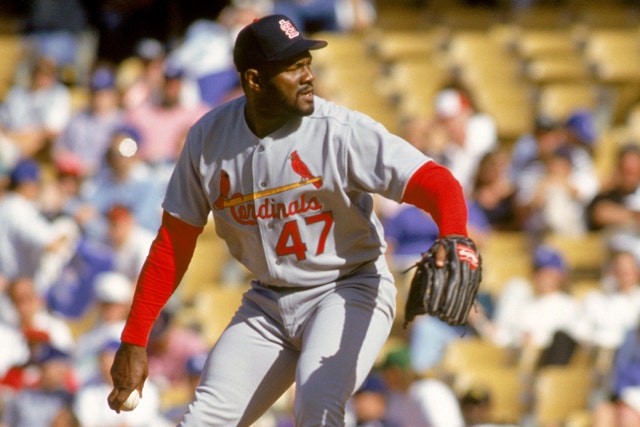
Lee Smith
(The Hall in 2014 reduced the number of years that a player can remain eligible from 15 to 10; Smith was grandfathered in and allowed to stay on the ballot for 15.)
A former pitcher from Smith’s era recently contacted me and asked how many saves of two or more innings that Smith had compared to Mariano Rivera and Trevor Hoffman.
The answer, according to STATS LLC: 94 for Smith, 11 for Rivera, seven for Hoffman (though Rivera did have 14 in the postseason).
The former pitcher’s point is well-taken; Smith pitched -- and produced -- at a time when managers asked more of their closers.
Smith, during his 10-year peak from 1982 to ’91, averaged 90 1/3 innings per season. His ERA-plus during that time was 142, a touch higher than Hoffman’s career mark.
Maybe you’re not impressed that Smith was the all-time saves leader when he retired. Still, he made 60 or more appearances in 12 straight seasons, and had three top-five Cy Young finishes, the same number as Hoffman.
I voted for Smith multiple times, but he peaked at 50.6 percent in 2012 and dropped to 34.1 percent last year. Perhaps that is fair, and that the bar for closers, as specialists, should be higher. But as the players from his era can attest, Big Lee was quite a force.
Sammy Sosa, fifth year on ballot

Sammy Sosa
Mark McGwire failed to exceed 23.6 percent of the vote in his 10 years on the ballot, undoubtedly damaged by his admission that he used performance-enhancing drugs.
Sosa’s only confirmed link to PEDs was his positive test during survey testing in 2003, testing that was supposed to remain confidential, testing that carried no discipline. The players named in a New York Times report did not receive due process; their names were leaked.
Mike Piazza was elected to the Hall last year despite suspicions of PED use; Jeff Bagwell likely will be elected this year despite the same suspicions. Sosa, for me, isn’t as close, for the same reason that McGwire wasn’t close. His candidacy is based almost solely on his power.






































































































































